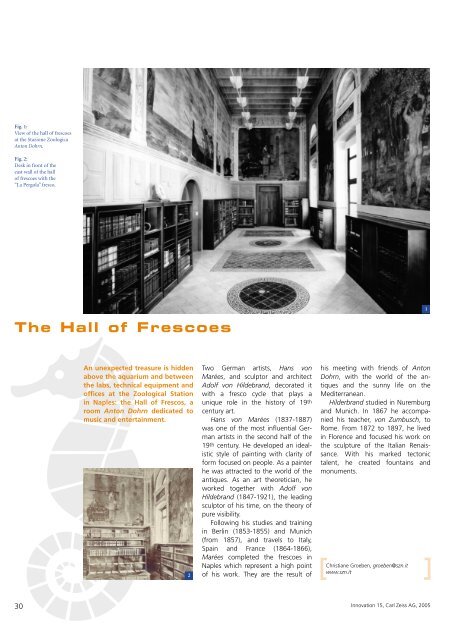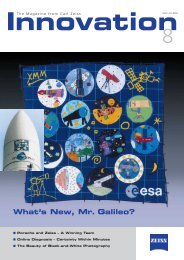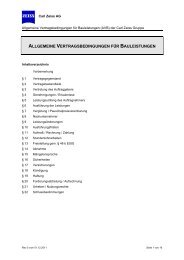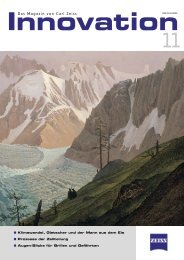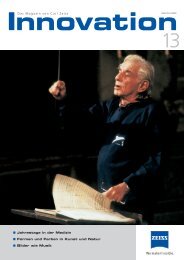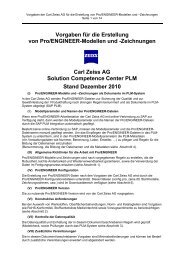Download PDF - Carl Zeiss
Download PDF - Carl Zeiss
Download PDF - Carl Zeiss
You also want an ePaper? Increase the reach of your titles
YUMPU automatically turns print PDFs into web optimized ePapers that Google loves.
Fig. 1:<br />
View of the hall of frescoes<br />
at the Stazione Zoologica<br />
Anton Dohrn.<br />
Fig. 2:<br />
Desk in front of the<br />
east wall of the hall<br />
of frescoes with the<br />
“La Pergola” fresco.<br />
The Hall of Frescoes<br />
30<br />
An unexpected treasure is hidden<br />
above the aquarium and between<br />
the labs, technical equipment and<br />
offices at the Zoological Station<br />
in Naples: the Hall of Frescos, a<br />
room Anton Dohrn dedicated to<br />
music and entertainment.<br />
2<br />
Two German artists, Hans von<br />
Marées, and sculptor and architect<br />
Adolf von Hildebrand, decorated it<br />
with a fresco cycle that plays a<br />
unique role in the history of 19th<br />
century art.<br />
Hans von Marées (1837-1887)<br />
was one of the most influential German<br />
artists in the second half of the<br />
19th century. He developed an idealistic<br />
style of painting with clarity of<br />
form focused on people. As a painter<br />
he was attracted to the world of the<br />
antiques. As an art theoretician, he<br />
worked together with Adolf von<br />
Hildebrand (1847-1921), the leading<br />
sculptor of his time, on the theory of<br />
pure visibility.<br />
Following his studies and training<br />
in Berlin (1853-1855) and Munich<br />
(from 1857), and travels to Italy,<br />
Spain and France (1864-1866),<br />
Marées completed the frescoes in<br />
Naples which represent a high point<br />
of his work. They are the result of<br />
his meeting with friends of Anton<br />
Dohrn, with the world of the antiques<br />
and the sunny life on the<br />
Mediterranean.<br />
Hilderbrand studied in Nuremburg<br />
and Munich. In 1867 he accompanied<br />
his teacher, von Zumbusch, to<br />
Rome. From 1872 to 1897, he lived<br />
in Florence and focused his work on<br />
the sculpture of the Italian Renaissance.<br />
With his marked tectonic<br />
talent, he created fountains and<br />
monuments.<br />
Christiane Groeben, groeben@szn.it<br />
www.szn.it<br />
Innovation 15, <strong>Carl</strong> <strong>Zeiss</strong> AG, 2005<br />
1


